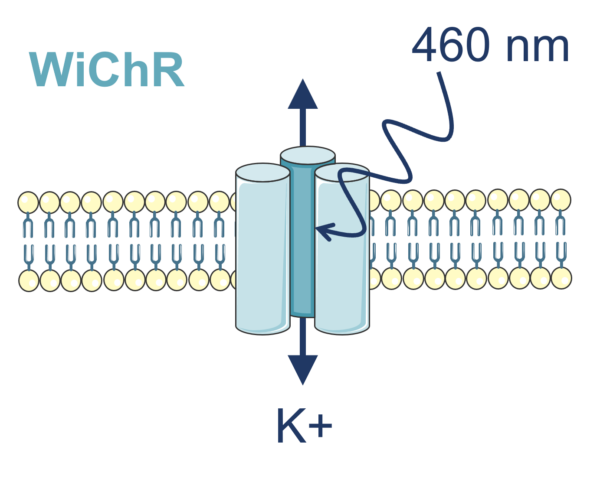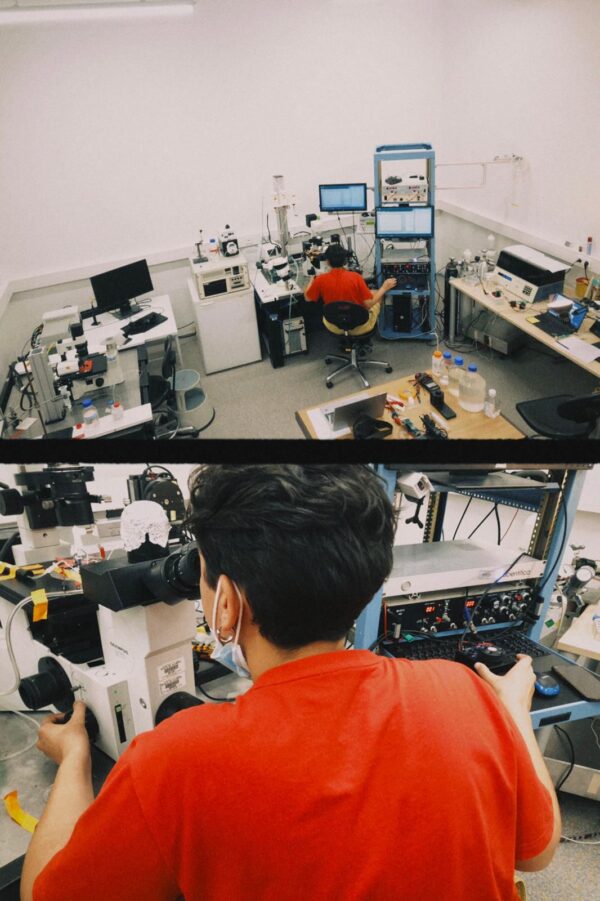My first collaboration is out!
My secondment in Freiburg just ended up with an amazing publication
Out now on Science Advances! Stem cells are a wonderful tool to create atrial cardiomyocytes that spontaneously and continuosly beat in a dish… but what happen if we transfect them with the highly potassium selective channelrhodopsin WiChR?
WiChR is a channel that comes from the marine species Wobblia Lunata. Differently from previosly described K+-conducting channels such as HcKcR1, , this channel is characterized by small photocurrent inactivation and improved light sensitivity.

During my secondment in Freiburg and thanks to the collaboration with Johannes Vierock and other labs, we successfully transfected my hiPSC-derived atrial cardiomyocytes with WiChR. After transfection, I recorded the beating cells on this wonderful set up that you can see in the image below. What did we see?
A reversible inhibition of action potentials during blue-light application. In 10 of 11 recordings, WiChR-elicited currents were sufficient to fully inhibit action potentials in syncytia of electrically coupled aCM!
Interestingly, at the beginning of the illumination we could appreciate a small hyperpolarization of membrane potential. While, after prolonged light application, the membrane potential was slightly depolarized compared to the max diastolic potential, but similar to the take-off potentials.

As end of this blog post, I would like to thank Johannes Vierock, Franziska Schneider-Warme and Remi Peyronnet for giving me the opportunity of being part of this project. And last but not least thanks to all the other collaborators of this amazing work.
Cheers with THE video of the first time we recorded the first action potential silencing! As you can see the excitement was high 😀
Follow me on Twitter if you wanna know more!
